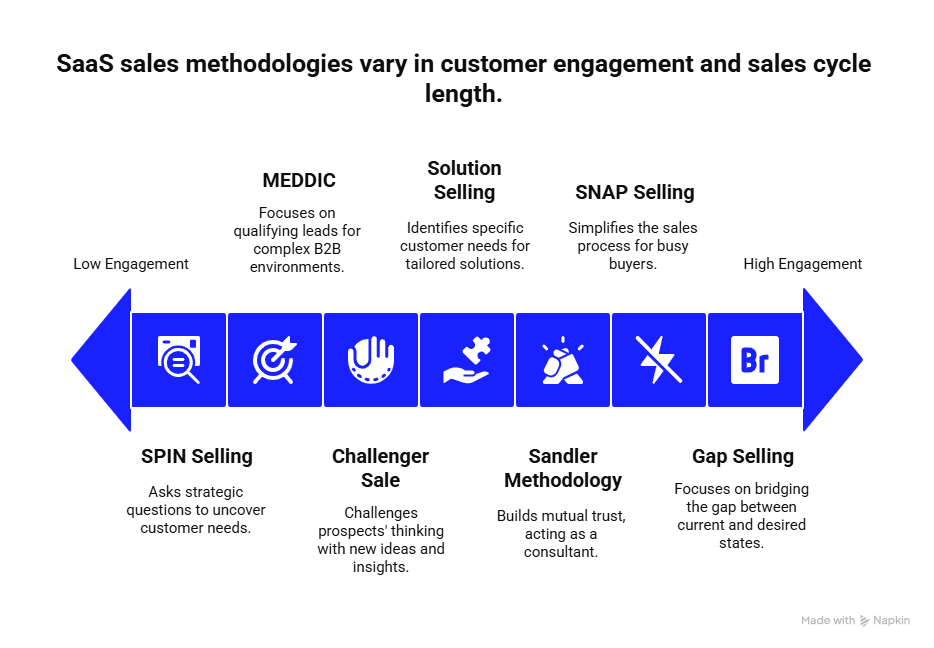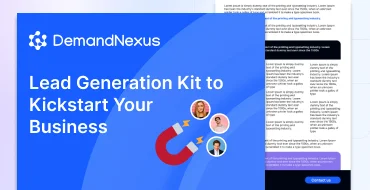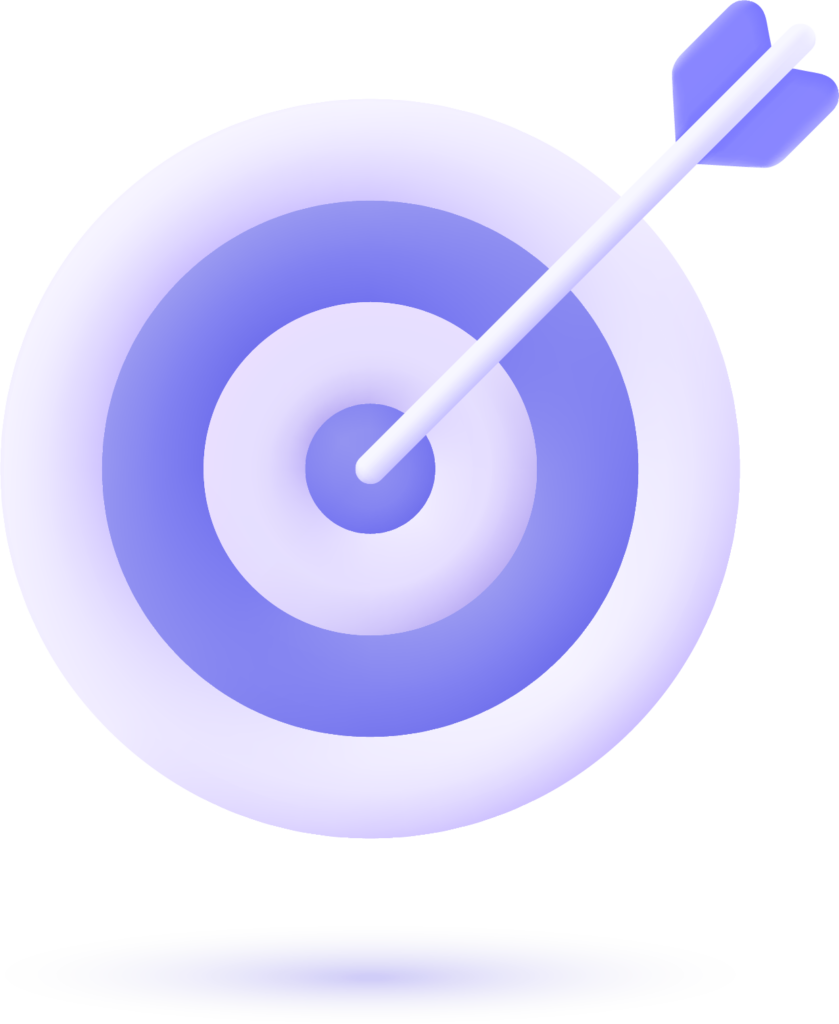SaaS sales powers the growth of B2B software companies, transforming curious prospects into loyal subscribers through a strategic blend of relationship-building, targeted marketing, and data-driven processes. Unlike traditional sales, Software as a Service (SaaS) demands a focus on recurring revenue, long-term customer success, and navigating complex buyer journeys. In today’s competitive B2B landscape, mastering SaaS sales means crafting a robust pipeline, optimizing conversions, and leveraging metrics to drive results. This comprehensive guide dives into the SaaS sales process, key strategies, funnel design, and essential metrics, with real-world insights and a case study highlighting how
DemandNexus fuels success.
What Is SaaS Sales?
SaaS sales is the art and science of selling cloud-based software delivered via a subscription model. Customers access the software through a web portal, with providers handling updates, maintenance, and support. Unlike one-off product sales, SaaS prioritizes recurring revenue through customer acquisition, retention, and upselling. In B2B markets, SaaS sales often involve extended cycles, multiple stakeholders, and a need to demonstrate tangible value to secure buy-in.
The challenge lies in building trust and proving your solution outperforms competitors. This requires a customer-centric approach, a well-structured sales process, and alignment with marketing efforts to guide prospects through the
SaaS marketing funnel. Let’s explore how to make it happen.
The SaaS Sales Process: A Roadmap to Revenue
A disciplined SaaS sales process moves prospects from initial interest to closed deals. Here are the core stages:
- Lead Generation: Spark interest through SaaS lead generation tactics like content marketing, webinars, or targeted ads.
- Prospecting: Engage prospects via cold email outreach, calls, or LinkedIn social selling to build relationships.
- Qualification: Assess leads against your Ideal Customer Profile (ICP) using criteria like BANT (Budget, Authority, Need, Timing) to focus on high-potential opportunities.
- Demos: Deliver tailored product demos that highlight how your solution addresses specific pain points.
- Closing: Negotiate terms, overcome objections, and finalize contracts to secure the sale.
Each stage aligns with the buyer’s journey, requiring coordination between sales and marketing to nurture leads effectively. For example,
lead nurturing services can keep prospects engaged with personalized content until they’re ready to buy.
SaaS Sales Models: Tailoring Your Approach
Your SaaS sales strategy hinges on the right sales model, which depends on your product, pricing, and target market. Here are the three main models:
| Model |
Description |
Best For |
Example |
| Self-Service |
Customers sign up and onboard independently, often via free trials or freemium plans. |
Low-cost, high-volume products for SMBs. |
Mailchimp |
| Transactional |
Sales reps provide personalized outreach and demos, targeting mid-market businesses. |
Scalable products with tiered pricing. |
Slack |
| Enterprise |
High-touch, customized sales for large organizations with multiple decision-makers. |
High-value software for enterprises. |
ServiceNow |
Many SaaS companies mix models. For instance, a freemium plan might attract startups, while a dedicated team targets enterprises. Choose based on your average contract value (ACV) and customer needs.
Building a High-Converting SaaS Sales Funnel
The SaaS sales funnel guides prospects from awareness to retention, aligning with the sales process. Here’s how to optimize each stage:
Awareness
Capture attention with value-driven content like blogs, videos, or
content creation services. For example, HubSpot’s blog draws millions by addressing marketing pain points.
Engagement
Deepen interest with webinars, case studies, or
event marketing. Use social proof like testimonials to build trust, as seen on Asana’s website.
Evaluation
Offer free trials or demos to showcase value. Streamline onboarding with guided tours, like Trello’s interactive checklists, to highlight key features.
Conversion
Simplify sign-ups with minimal forms and clear CTAs. Dropbox’s clean checkout page, with a single “Start Free Trial” button, drives conversions.
Retention
Post-sale, focus on customer success with regular check-ins and feature updates to reduce churn, a strategy Salesforce excels at.
Key SaaS Sales Strategies for B2B Growth
Effective SaaS selling blends consultative approaches with scalable tactics. Here are five strategies to boost conversions:
- Offer Free Trials: Let prospects test your product to reduce risk. A 14-day trial creates urgency, as seen with Zoom’s freemium model.
- Optimize Pricing: Annual plans lower churn and stabilize cash flow. Zendesk offers discounts for yearly subscriptions, encouraging commitment.
- Prioritize Consultative Selling: Use methodologies like SPIN Selling to uncover needs through strategic questions, aligning solutions with customer goals.
- Leverage Upselling: Promote premium features as customers grow. For example, Monday.com upsells advanced analytics to scaling teams.
- Deliver Targeted Demos: Customize demos to address specific use cases, leaving time for questions to engage buyers, a tactic Gong.io uses effectively.
Designing a Robust SaaS Sales Pipeline
A well-structured sales pipeline ensures prospects move efficiently from lead to customer. Here’s how to build one:
- Define Stages: Map stages like Lead, Qualified, Demo, and Closed in a CRM like HubSpot for clear tracking.
- Automate Tasks: Use B2B sales enablement services to automate follow-ups, freeing reps for high-value interactions.
- Qualify Rigorously: Apply MEDDIC to identify high-fit prospects, reducing wasted effort on unqualified leads.
- Monitor Progress: Use pipeline metrics to spot bottlenecks, such as low demo-to-close rates, and adjust tactics.
A streamlined pipeline, like the one Canva uses with its self-service model, minimizes friction and accelerates deals.

Essential SaaS Sales Metrics to Track
Metrics provide insights to optimize your sales engine. Here are the must-track KPIs:
| Metric |
Formula |
Why It Matters |
| Monthly Recurring Revenue (MRR) |
Sum of monthly subscription revenue |
Measures predictable revenue growth |
| Customer Acquisition Cost (CAC) |
(Sales + Marketing Costs) / New Customers |
Evaluates cost efficiency |
| Churn Rate |
(Lost Customers / Total Customers) * 100 |
Tracks retention success |
| Win Rate |
(Closed-Won Deals / Total Opportunities) * 100 |
Gauges closing effectiveness |
| Lead Velocity Rate (LVR) |
((Current Month Leads – Last Month Leads) / Last Month Leads) * 100 |
Predicts pipeline growth |
Tools like Tableau or
demand generation services can visualize these metrics, helping you identify trends. For example, a rising CAC might prompt a shift to more cost-effective channels like
cold calling services.
Case Study: DemandNexus Revamps SaaS Sales for a Data Analytics Firm
A mid-sized SaaS company offering data analytics tools struggled with a stagnant pipeline and low conversion rates. Prospects engaged but often dropped off during demos.
DemandNexus stepped in to transform their sales approach.
- Challenge: Only 20% of demo bookings converted to sales, and the pipeline lacked qualified leads.
- Solution: DemandNexus implemented a outsourced SDR service to qualify leads using the MEDDIC methodology. They also redesigned demos to focus on customer-specific use cases and introduced appointment-setting services to boost attendance.
- Results: Demo-to-close rates jumped to 45%, the pipeline grew by 30%, and MRR increased by 20% in four months.
DemandNexus’s expertise in B2B SaaS sales, from lead generation to funnel optimization, delivers measurable results. Our services, like
account-based marketing, can help your team target high-value accounts and close deals faster.
Overcoming SaaS Sales Challenges
SaaS sales comes with unique hurdles. Here’s how to address them:
- Long Sales Cycles: Shorten cycles with 14-day trials or by targeting mid-level decision-makers first, as Slack does.
- High Churn: Enhance onboarding and customer success with regular touchpoints, a strategy Adobe uses to retain Creative Cloud users.
- Low Conversions: Refine qualification with methodologies like Challenger Sale and test demo formats to improve win rates.
Tools to Amplify SaaS Sales
Technology streamlines processes and boosts efficiency. Here are key tools:
| Tool |
Purpose |
Example |
| CRM |
Track leads and interactions |
Pipedrive |
| Sales Enablement |
Create proposals and track engagement |
Qwilr |
| Scheduling |
Simplify meeting bookings |
Acuity Scheduling |
Your SaaS Sales Playbook
Building a high-performance SaaS sales engine requires a clear process, a customer-focused funnel, and relentless optimization. Start by selecting the right sales model and methodology, then design a pipeline that minimizes friction. Track metrics to uncover opportunities, and empower your team with tools and training. By prioritizing value and relationships, you’ll convert prospects into loyal customers.
Ready to supercharge your SaaS sales?
DemandNexus offers tailored solutions, from lead generation to pipeline management, to drive B2B growth. Contact us to unlock your revenue potential today.





